#Men of Good Fortune
Explore tagged Tumblr posts
Text

MEN OF GOOD FORTUNE 1389-1589–Jill Thompson

MEN OF GOOD FORTUNE 1689-1889–Jill Thompson

MEN OF GOOD FORTUNE 1989–Jill Thompson
And just adding that these are well over a decade old and were done for a movie pitch…
#the sandman#dream of the endless#morpheus#sandman#hob gadling#men of good fortune#jill thompson#sandman art#sandman x art#sandman concept art
249 notes
·
View notes
Text
Hob vs Shakespeare: or capitalism vs Art (and the corresponding visions of immortality)
written for The Sandman Book Club
Leaving aside the holy transfiguration that has been made by fandom in recent years, the character of Hob is very significant. Representing the literary topos of the ordinary man, the man without qualities, the all-too-human human, he is characterized not by his virtues (and if we want, not even by his vices) but precisely by being a normal, banal creature, as all human creatures are in the eyes of the gods.
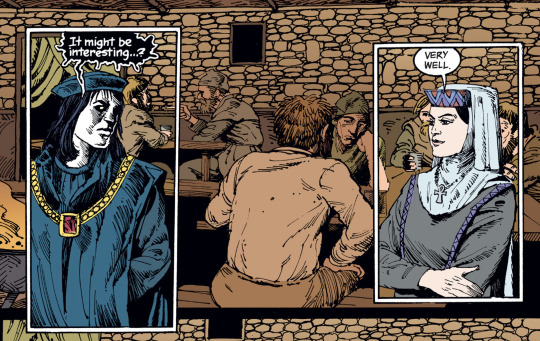
Hob's entry in Men of Good Fortune also has countless references in mythological literature. Two deities, Death and Dream, who observe human beings with the curiosity of those who never, or almost never, get down in the middle but are always up high (It might be interesting...). Can eternity be humanly bearable? Can a human being eternally refuse the embrace of death? It reminds me a little of the wager between God and the Devil on poor Job in the Bible: will Job be able to endure the most terrible misfortunes without denying the name of God?
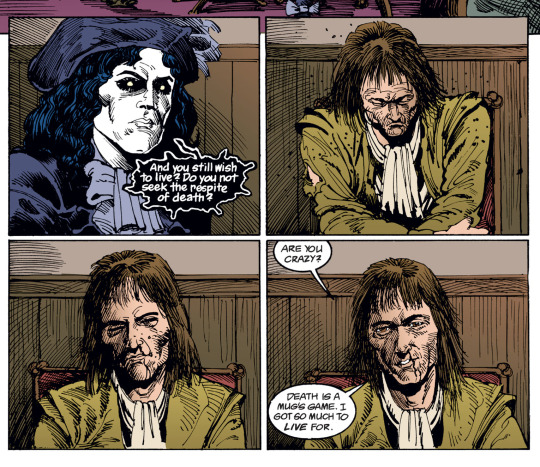
But Hob isn't a man of faith. He does not see in eternal life a means to elevate himself as a human being but to enjoy earthly opportunities. He is an entrepreneur, an ante litteram capitalist: whether it is the war, the printing or the slave industry, Hob's actions have value as instruments to make money and a high standard of living. Love and pain, however great and lacerating, do not deter him from the one constant goal in a life full of ups and downs: to live forever. The ambition, precisely, of an ordinary man without qualities, whose interpretation of eternity can only coincide with the desire for the eternal, abundant satisfaction of materialistic needs.
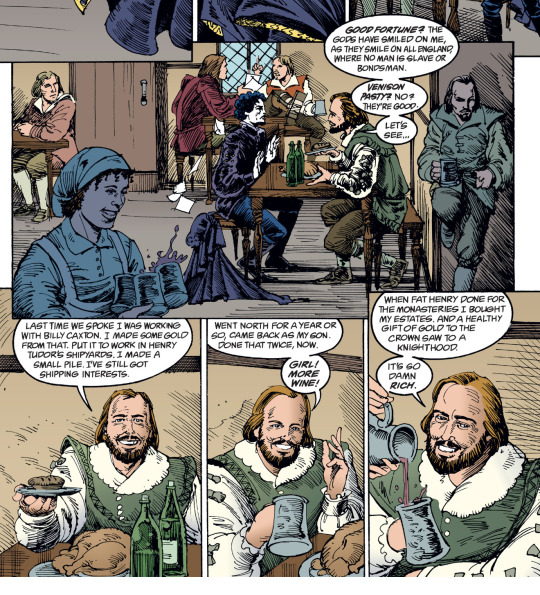
Hob's vision of immortality is particularly jarring in a story full of great writers' cameos. Chaucer. Marlowe. Shakespeare. Immortals too, of another idea of immortality, achieved through art. There could not be a more stark contrast between these two visions and it is no coincidence that Hob's immortality is the result of a game between gods and human while that of the artists often is a deal with the divinity, be it benevolent or malevolent. Hob's immortality is an immortality without sacrifice, or rather, without there being anything really worth sacrificing for: no love is so great as to make him give it up. The immortality of the artist, on the other hand, is one for which the artist sacrifices everything, primarily himself.
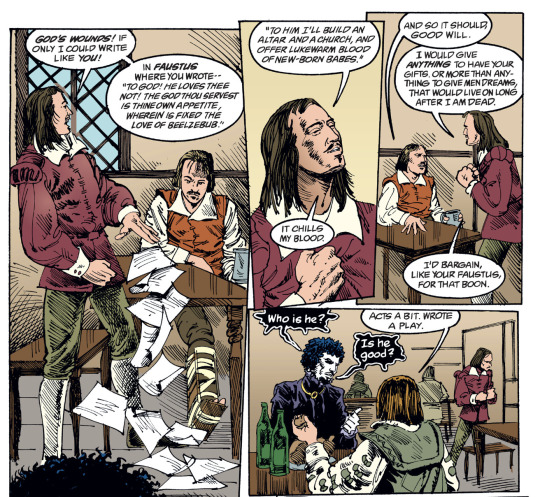
Yet it is not the immortality of artists that we identify with. It fascinates us, seduces us, but it is to the immortality of the common man, the immortality of Hob, that most of us would look with envy. Capitalist immortality in a capitalist society: Live & Consume. Forever.
54 notes
·
View notes
Text
A few random thoughts about the comic issue of "Men of Good Fortune" in The Sandman and how they pertain to Dreamling as a ship based on the show.
I get the sense when reading MoGF that it's a... shall we say, "young" story? It's the sort of story that has its seeds in your high school creative writing class. You're learning about English history and you're also writing short stories and you think, "Wouldn't it be cool if two guys met every 100 years to talk about these events I'm learning about and it's the same guys because they're immortal?"
I say this in part because I wrote a similar story in high school without having read MoGF, but also because it's a very simple story with no actual plot arc, nothing actually changes by the end in the original comic. The addition of Dream "missing" the meeting adds a lot of weight and consequence that isn't there in the comic. The closest it gets is, "Dream says he's not going to come to the next 1989 meeting but then a bunch of stuff happens off screen and he shows up anyway, thus confirming they are indeed friends." That is barely a plot beat of any kind, nothing really changes, it just clarifies that they are friends, which we could have suspected the whole time.
Anyway, on that note, I've got a deep-seated suspicion that in the very earliest drafts of this story, Dream was Death. Because it makes sense. Death spares a commoner on the condition that he report back every century to tell about how his life is going. Also, Death is certain that this mortal will want to die at some point because of all the horrible things he's living through, but in the end he doesn't and they become friends.
Again, this is a very simple story, basically a fable. Then this story is lifted into a new setting, the Sandman universe, and the antagonist of Death is turned into Dream but Death is still there, because Death as a figure makes much more sense than Dream as the basis for this wager.
I've commented many times before that Hob has less than nothing to go on as far as guessing Dream's identity but that one very natural conclusion he could come to is that Dream is Death because Death is much easier and thematically consistent with what happens in the story than Dream. Dream even remarks in the show (paraphrased) that, "[He] is far more terrible than Death," which objectively makes very little sense other than in their personal mannerisms.
But Dream's curiosity as to Hob's will to live isn't all that consistent with his function as Lord of Dreams, can you really tell me that the Lord of Dreams can't conceive of a mortal that would want to live forever, who wouldn't dream of living forever? IMO this is one more piece of evidence that the story was lifted from an earlier draft where there is no Dream and Death, there is only Death and Hob, with Death left in as sort of a homage to the original premise and to explain why Dream would get involved at all in such a wager.
It also kind of explains why the implications of this centuries-long friendship get largely ignored until quite late in the Sandman comics. Dream would be Hob's only constant, at least that he can speak to and isn't like the Sun and the Moon or something, and yet our only nod to this is very very late in the comics.
Again, I think this is because in a fable about Death and A Normal Guy meeting over and over as a commentary on English history, it makes perfect sense that you wouldn't really explore the interpersonal implications of how Hob feels about this guy, if Hob cares about this guy, because it's Death, clearly this is just a fable.
But once it's not Death, once it's someone else, once Dream's interactions with this guy actually don't align with his function, actually rather glaringly doesn't align with his function such that his relationship with Hob actually becomes Dream's biggest singular point of individuality, the biggest piece of proof that he is an individual person and not just his function because watching this guy live has nothing to do with his function because he's not Death, then we also begin to wonder how important are these guys to one another, as individuals, because it's not a simple, streamlined fable anymore about Death and Just A Guy meeting.
Basically, I think that as is often the case, the inconsistencies are what give some of Gaiman's juvenilia works the charm that they have. They raise more questions than they answer, because they're not rigorously plotted and the implications of certain story decisions aren't explored, for example even how magic like immortality works in this world doesn't really make consistent sense (ex. Orpheus and Hob have very different immortalities within the same story despite both being gifted by Death, one can't choose to die whenever he wants and there's no explanation as to why this is other than The Story Demands It, which is rather clumsy but does lend to a sense of myth).
It's not until much later in the author's career in the comic and (retconned with) the show that the narratives begins to inquire into things like, "What do these two individuals mean to each other as people. Does Hob mourn Dream, or think of him when he's not there? Does the singularity of Hob in Dream's life matter to him, or give him pause?" all questions that would be absurd in a simplistic fable about Death and Just A Dude but once lifted from that original context, create fascinating inconsistencies that begin to matter and become fodder for deeper explorations as seen in fanfiction and shipping these two characters.
119 notes
·
View notes
Text
Sandman Audible - Favorite James McAvoy Line Readings - Sound of Her Wings / Men of Good Fortune
The Sandman Book Club has been discussing The Sound of Her Wings / Men of Good Fortune for the past few weeks, so I am now sharing my:
Favorite James McAvoy Line Readings from the Sandman Audible for these episodes (because his line readings are glorious)
The Bread (Sound of Her Wings)
So in the comic and the TV show, Death throws the bread at Dream, and obviously he doesn't feel the need to describe what happened. But in the Audible, there's a "thump" noise and then he says: "You... threw the bread at me" in such a tone of shock.

The Matted Hair (Men of Good Fortune)
Death and Dream are about to go into the tavern for the first time. Dream is unimpressed by what he sees, and says this:
"The human world. I could conjure a nightmare from these faces. The missing teeth, the pocked skin, the matted hair."
His delivery of "the matted hair" has no business being as funny as it is, lmao

The Appointed Hour (Men of Good Fortune)
Finally, it's 1989. Hob thinks he's being stood up, but in the comic/Audible version of things, he is not!
The bartender/waitress has been teasing Hob (or "Bob," as she knows him). Then the door opens and she sees Dream and says, "Oh Bob! Your friend's here!"
And then Dream says:
"AT THE APPOINTED HOUR!"
Honestly. James McAvoy says it so proudly. I picture him like kicking the door open and yelling his hello to the entire bar. It. is. so. great. (It is also the exact opposite of any way I could ever picture Tom Sturridge's version of Dream ever greeting anybody ever. But in the audiobook, it is perfect.)

(It's funny to me also that the bartender recognizes Dream as "Bob's friend." I can just imagine Hob being like- "ok so I'm waiting for someone, he has pale skin [like VERY pale skin], black hair, his eyes are sometimes stars, and his clothing is always era appropriate. like he definitely looks like he's dressed for the correct year. can you let me know if you see him?" And the bartender being like uh huh sure thing bob)
#lol#the next time i meet someone i want to yell AT THE APPOINTED HOUR at them#the sandman#sandman#the sandman audible#sandman audible#james mcavoy#dream of the endless#morpheus#the sandman book club#sandman comic reread#sandman rewatch#the sound of her wings#men of good fortune
31 notes
·
View notes
Photo
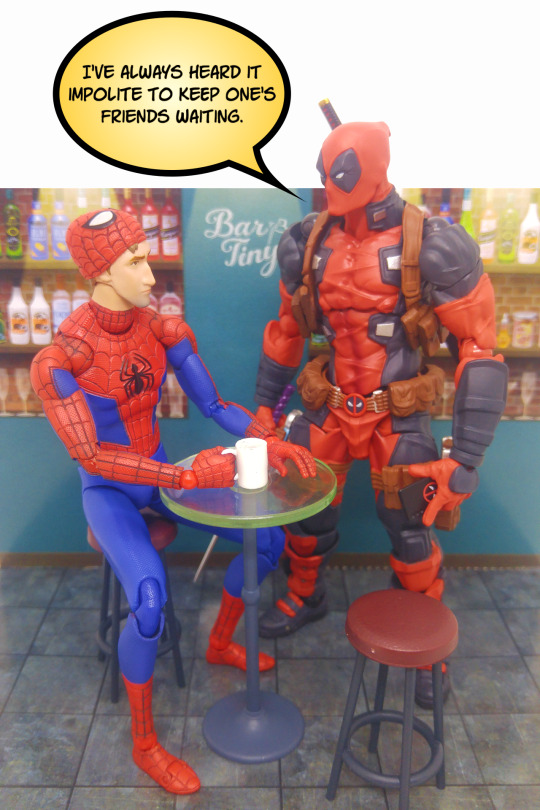
Happy 634th Anniversary, Dreamling! 🏳️🌈
#Dream of the Endless#the Sandman#Hob Gadling#Dreamling#Neil Gaiman#Michael Zulli#Men of Good Fortune#Spideypool#Deadpool#Wade Wilson#Peter B. Parker#Peter Parker#Peter B Parker#toy photography#Amazing Yamaguchi#Yamaguchi Katsuhisa#Figure Complex#Revoltech#Kaiyodo#デッドプール#山口勝久#MAFEX No. 109 Peter B. Parker#MAFEX#マフェックス no. 109#マフェックス#The Sound of Her Wings
65 notes
·
View notes
Audio
8:03 PM EST January 16, 2024:
Lou Reed - “Men of Good Fortune” From the album Berlin (July 1973)
Last song scrobbled from iTunes at Last.fm
–

2 notes
·
View notes
Text
that one scene in the audio drama version of "Men of Good Fortune"
h*b: friendship. [smyECK] OI fink yoa lonely.
dream of the mcavoy: [heaugheughgughghgh] [hhhhhhhhh] [appallingly loud close-mic chair creak] y-you. da-are. you. daAare. imply that *i* might befriend a morTAL?? that one of MY kind might need comPAN-IONship?? YOUDAAAAARE to CALL ME LONELY???!??!?!!?!?!??! [frantic chair hits, furniture scrapes, door slams, screaming, crying, pissing, shitting, falling over and exploding,]
#sandman#sandman audio drama#men of good fortune#@neilgaiman hire my gf to do Vol. IV#she could clean up the dialogue So So Good#what are these mouth noises?? who kept those in???#is james mcavoy above an audio editor????#THE SPATIALIZATION; NEIL!!!
4 notes
·
View notes
Text
@windsweptinred , I need to reblog because I can only put panels in here.
So, the reason why I associate Daniel with red roses (apart from poppies) is because of the way Zulli uses roses specifically in both “The Wake” and “Men of Good Fortune”.
Morpheus’ roses are blue, Daniel’s are red.
Morpheus:


Just two exemplary panels here, they really are all over The Wake—the wreaths etc, and even his barge is decked in them. They are symbolic for grief, but also the unattainable. I wrote about this before:
Daniel:



(Again, just the most obvious ones)
The only time we diverge from this is in Men of Good Fortune. And we see Morpheus tossing the red rose.

And then they show up again on the cups, and we are specifically zooming in on them when Hob asks for his name.

The red roses were always a symbol for emotional availability for me (we could call it love, but I’d like to avoid the romantic connotations in this context because I really don’t think that’s what this is about).
And to me, they were always exemplary for Morpheus not being emotionally available at this point (he throws it away), and the further conversation is of course cut short by Johanna.
But Daniel is not that. He is kinder, he is emotionally available from the start. He is not scared to be seen and see others, if that makes any sense?
Welcome to my Danny/Murphy roses head-canon, but since Zulli is (was 🥺) so meticulous with his symbolism, I don’t believe for a second this is coincidental. And even if it were: It has the meaning we assign to it I guess 😉
OK so I've got my sigil tattoo, but I'd really love a tat alongside it on my upperarm to represent Daniel. (I've always linked the helm more with Morpheus.) Any ideas?

#the sandman#sandman#dream of the endless#morpheus#daniel hall#michael zulli#the wake#men of good fortune#bit of a mini#sandman meta
27 notes
·
View notes
Text

Hob Gadling—Phil Cho (Earth 27 Commission)
#the sandman#sandman#hob gadling#dc comics#Earth 27#phil cho#for the#men of good fortune#community reread#sandman art#queue crew
40 notes
·
View notes
Text
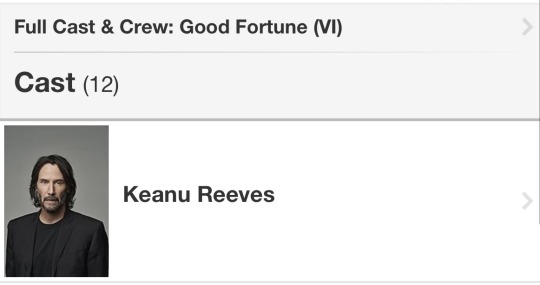


huge day for thirsty bitches
#if u know me u know these are the only 2 men that exist to me#polynesian men slay#keanu reeves#roman reigns#good fortune#cinema#film#movie
13 notes
·
View notes
Text
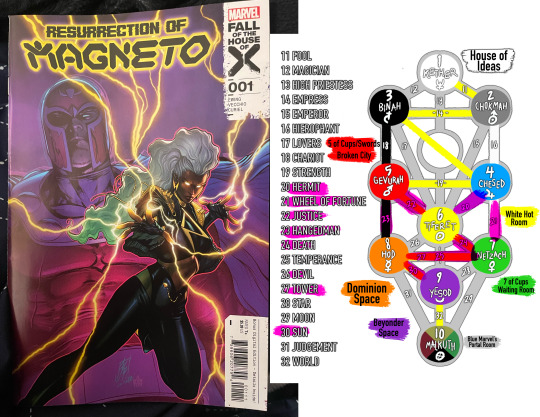
Resurrection of Magneto #1 was incredible! I’ve mapped out Storm’s journey by correlating the tarot imagery. Interestingly, she is not taking the lightning path despite her motif, instead starting at Malkuth heading to Netzach, followed by Hod and ending in Gavurah.

Magneto as the 5 of Cups in the Broken City (Gavurah)
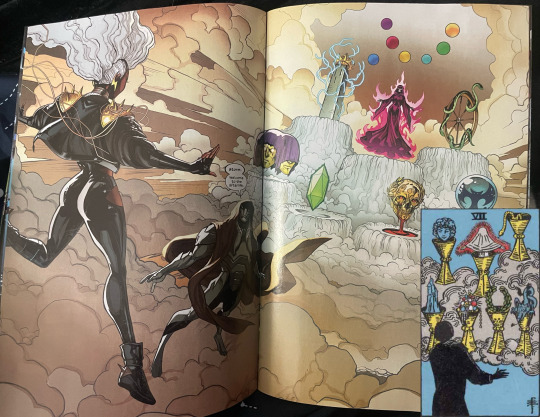
Storm as the 7 of Cups in the Waiting Room (Netzach)
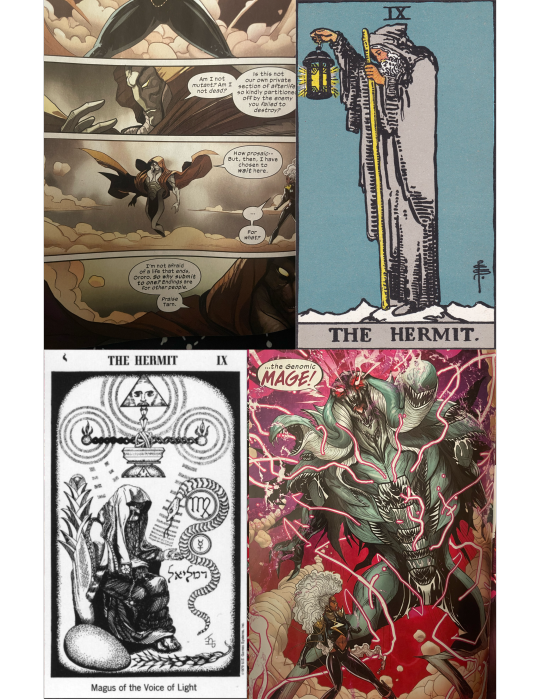
Tarn as the Hermit (or maybe the Devil but I’m leaning Hermit due to the serpent imagery)

The 7 of Cups featuring the Wheel of Fortune

Ashake, servant of the goddess Ma’at, as Adjustment (Justice), but the black cat and magical attributes are also giving Queen of Wands
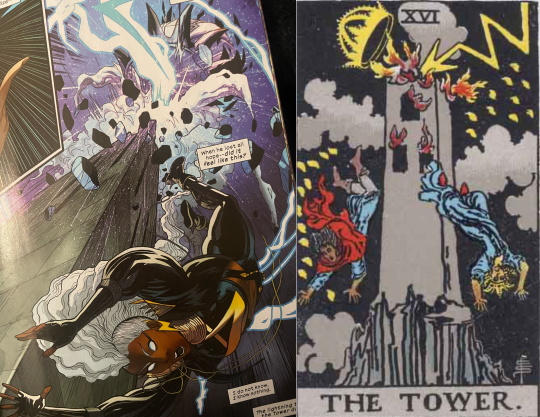
Storm as the Tower

The Domains as the Sun in Domain Space (Hod) peeking into Beyonder Space (Yesod)

Storm and Magneto as the Hanged Man

Storm as the 5 of Swords, featuring elements of the 5 of Cups, in the Broken City (Gavurah)
#comics are good for your soul#tarot#marvel#kabbalah#comics#x-men#Storm#Magneto#tarn#ashake#ma’at#5 of cups#5 of swords#7 of cups#The hermit#wheel of fortune#the tower#the hanged man#adjustment#justice#the sun#gavurah#netzach#hod#yesod#thoth tarot#hermetic tarot#ororo munroe#nathaniel essex#resurrection of magneto
18 notes
·
View notes
Text
like. you don’t understand. she does everything wrong, makes endless terrible decisions, and it takes her family and nearly all of her friends dying for her to realize that her worth is not tied to her utility and figure out how to save herself. she’s everything.
#the amount of men who die or almost die for HER character development is WILD…#her arc is probably the best in the entire show despite the fact that she was only there for half of it#[redacted]’s is also pretty good honestly but they didn’t get into it as much as they should have… they dropped the ball#which could also be said for [redacted] but that’s another story#‘the writers dropped the ball’ basically summarizes the entire show#which is what makes it weird that her arc is so good#probably it was good by mistake#a fortunate coincidence
3 notes
·
View notes
Audio
4:09 PM EDT September 14, 2024:
Lou Reed - “Men of Good Fortune” From the album Berlin (July 1973)
Last song scrobbled from iTunes at Last.fm
–

1 note
·
View note
Text
Jonathan: mina can't go to that horrible place. you have never felt the vampire's lips upon your neck! perhaps it is better to die than to go through this trouble.
Mina: thank GOD my friends are rich
#she's so smart i love her#she deserves to spend the fortunes of rich men#but that small bit of jonathan breaking down to scream about how van helsing doesnt understand what hes leading mina into??#was SO GOOD#ben galpin and the background music at that part (25:15 yeah i made a note of the time)#my hand FLEW to my mouth#he has SEEN THE HORRORS#mina has SEEN THE HORRORS#arthur had to KILL HIS FIANCE#ONE MORE WEEK AND THEN WHAT???#WHAT AM I GONNA DO WHEN I CANT LISTEN TO MORE OF THESE VICTORIAN VAMPIRE HUNTERS#anyway this episode was incredible as always#love you re: dracula team kissing you#dracula daily#re: dracula
22 notes
·
View notes
Text


Hmm...
#x-men#x men the animated series#x-men '97#marvel#shame akom was a terrible studio#they also did work for btas and were so bad they eventually got fired#but they animated x-men for all five season#despite making so many mistakes on the first ep they refused to fix and came close to being fired as well#fortunately studio mir is pretty good
7 notes
·
View notes
Text
I put a funny little tweet that said "every time you say Taylor swift a mediocre white man appears to tell you how overrated she is" on my ig story and then the next slide was some jerk responding and op said "oh look there he is" and it was funny . My friend (who I love . I love her I love her I love her I lo-) replied to the first slide saying "I'm not a white man but I think she's overrated" 🤪 honey babygirl you failed the test. I hope she sent that before she saw the second slide and was a little embarrassed .. queen I know how you feel about Taylor Swift . I don't want to do this
#lowkey actually ticked me off and she hasn't actually ticked me off in years 💀#she swears shes not 'ooh im special bc i dont like something most people do' but thats how it comes across MOST of the time#especially when i repost something making fun of MEDIOCRE WHITE MEN and you feel the need to remind me that you think shes overrated#good for you bestie. fortunately for me my life is greatly improved by the presence of Taylor Swift
6 notes
·
View notes